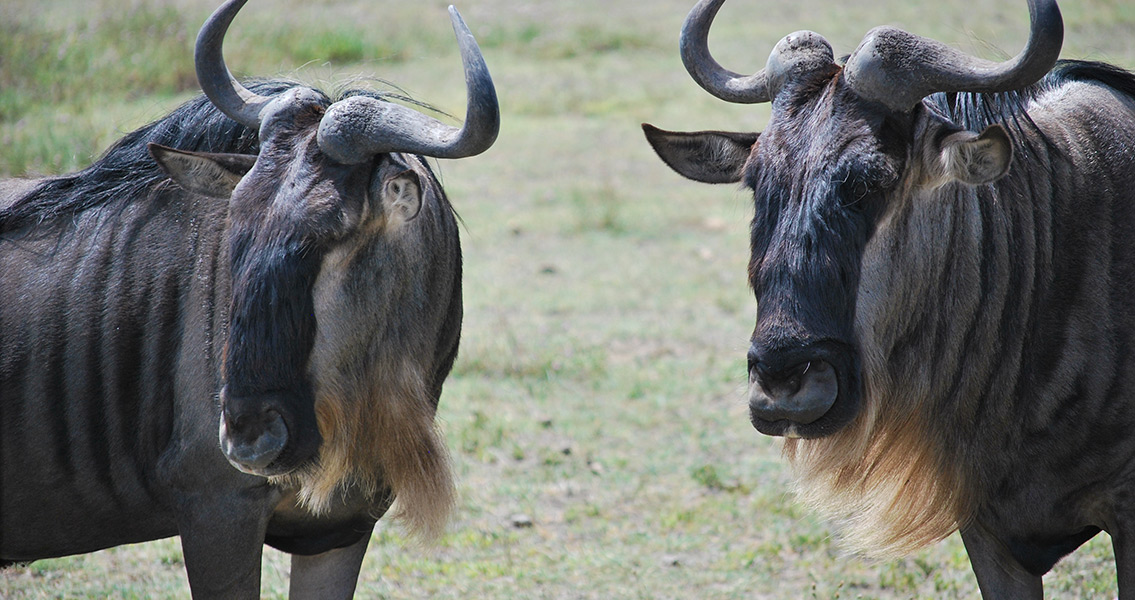<![CDATA[In one of the oddest cases of convergent evolution discovered to date, scientists have revealed that two completely different species, separated by millions of years, evolved nearly identical noses. It gets even weirder, as the two animals truly couldn’t be more different. Rusingoryx atopocranion, a distant relative of the wildebeest that lived and died around 65,000 years in the past, was a mammal; the other creature, Lambeosaurine hadrosaur, was a duck-billed dinosaur that lived 65 million years ago. Yet both the four-legged mammal and the ancient dinosaur shared common characteristics – a protruding, hollow bony crest on their head concealing a nasal passage unique to the two species. In an interview in The Christian Science Monitor, Haley O’Brien, the lead author of the recently published research study, compared the two creatures, pointing out that the trumpet-like nasal passages of both R. atopcranion and L. hadrosaurs are visually indistinguishable. Additionally, O’Brien remarked that fossil evidence from juvenile and adult specimens of both extinct species shows that the strange, unique feature seems to have developed over time in the same way. Convergent evolution can and does happen regularly, though there are usually certain differences in the end result. Bats, birds, and insects can all fly for instance, yet these different species developed these abilities with specific adaptations. In the case of the dinosaur and the wildebeest, the similarities in evolutionary adaptation seem practically indistinguishable, prompting scientists to seek environmental factors that could have triggered their convergence. Truth be told there are several traits common to L.hadrosaurs and R.atopcranion, as both animals had a herbivorous diet and lived in herds. However, the similarities between R. atopcranion and L.hadrosaurs don’t extend much further than that save for their identical nose; the habitat of the former was dry savanna, while L.hadrosaurs were at home in tropical rainforests. The scientists do have some ideas about the purpose of such a nasal cavity, although reaching these conclusions proved difficult as the fossilized remains of these animals have left behind no soft tissue to examine. Researchers turned to the closest living cousins of the younger animal – antelopes and wildebeests – leading the team to believe that R. atopcranion at least used the hollow cavity, which looks as if it connected to the vocal tract as part of the mammal’s respiratory system, in order to vocalize. O’Brien says that the early wildebeest cousin would have been a highly social animal in life, as they would have lived in herds. The likelihood of using vocalization to communicate was high, the lead researcher said, adding that there’s little else that such a unique nasal cavity would be helpful for in R. atopcranion. By extension, L. hadrosaurs might have used this unique capability in the same way, to create ultra-low frequency bellows that only they would have been able to hear. These frequencies, known as infrasound, are used by other large herbivores such as elephants today for a similar function. The research study can be found online at www.cell.com Image courtesy of Wikimedia Commons user: Chad Rosenthal]]>
2 Species, Millions of Years Apart, Share Same Nose
